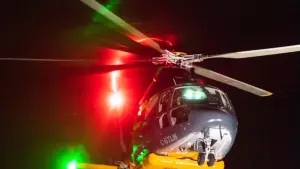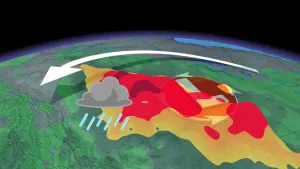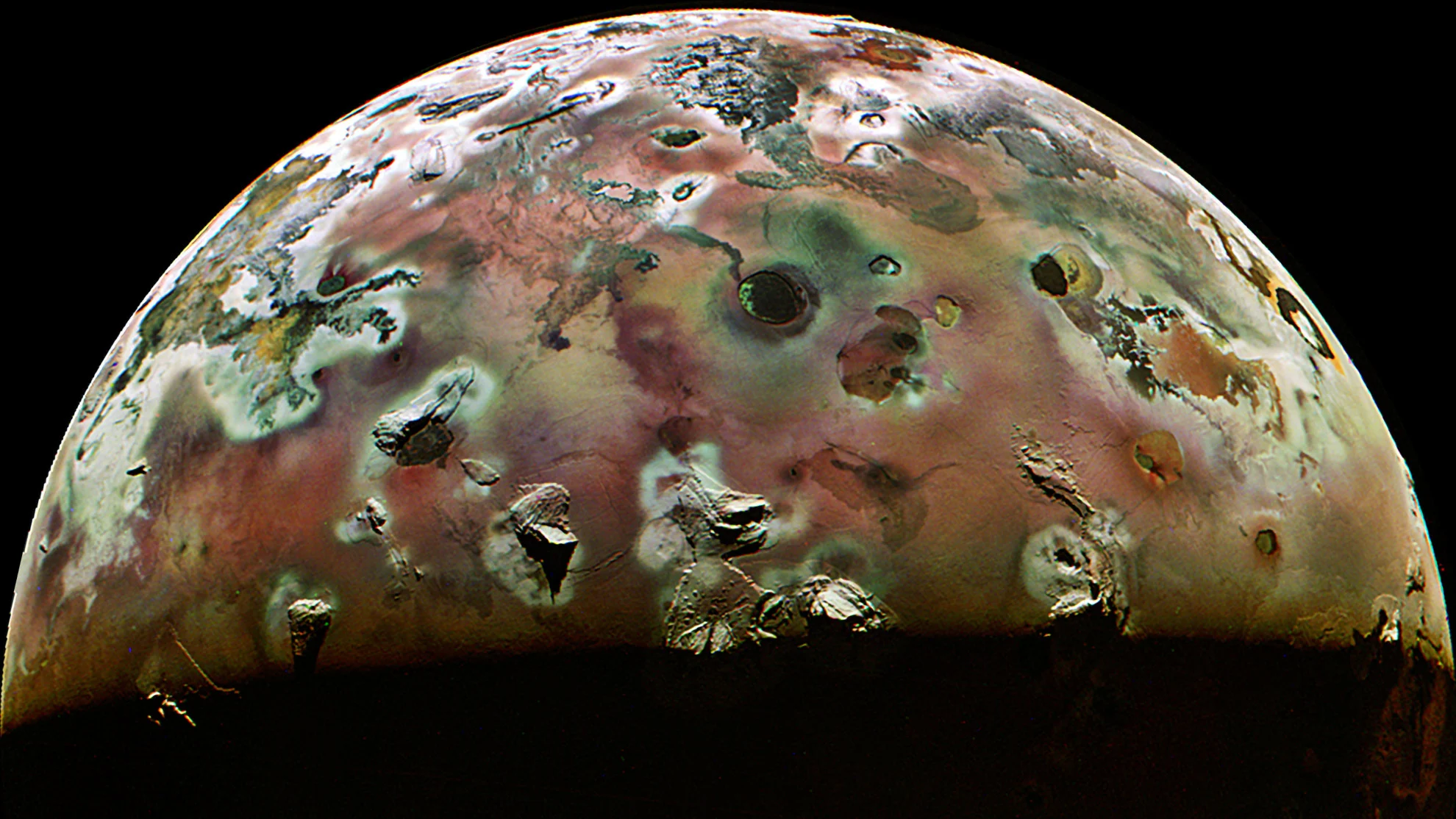
Volcanic Io imaged in spectacular detail by NASA's Juno probe
This is our best look yet at the most volcanically active place in our solar system.
After making the closest Io flyby of any spacecraft in more than 20 years, NASA's Juno probe returned amazingly detailed imagery that will help scientists discover the source of the small moon's volcanic activity.
As the Galilean moons orbit around Jupiter, they experience intense tidal forces from the massive planet. Ganymede's unique magnetic field results from this, as does the subsurface ocean of Europa, but the impacts on the innermost of the four — Io — are perhaps the most extreme.
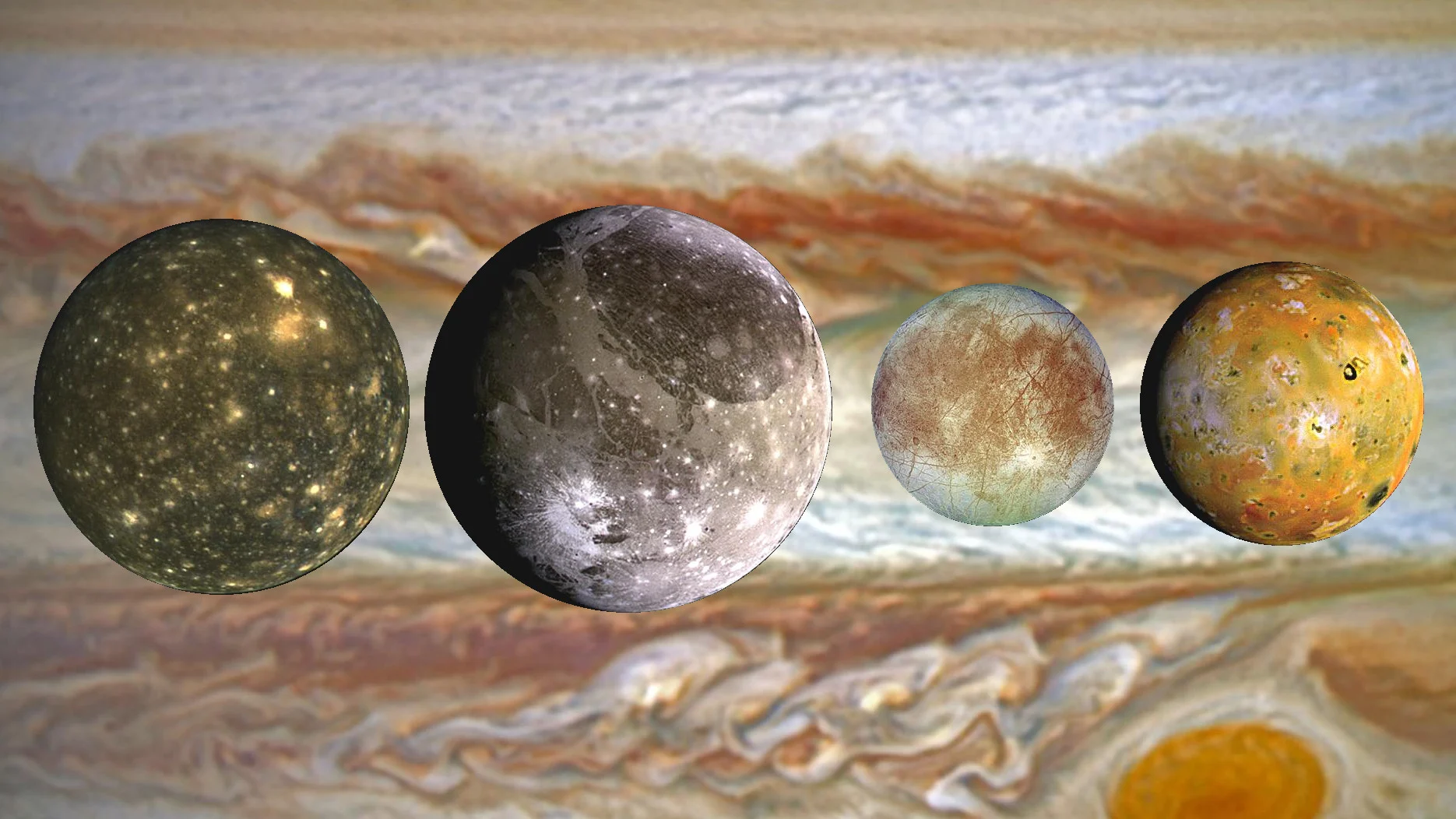
The four Galilean satellites, from farthest Callisto (left), to Ganymede, Europa, and Io (right), as imaged by the Galileo satellite in the mid-1990s, are shown superimposed on the clouds of Jupiter captured by Hubble in 2016. Credits: NASA/JPL-Caltech and NASA's GSFC
As Io is squeezed and stretched by Jupiter's gravity, its solid rocky surface has been turned into the most volcanically active place in our solar system. According to NASA, hundreds of active volcanoes dot the small moon. Lava plumes constantly renew its surface as molten rock fills in impact craters and creates new volcanic floodplains.
On December 30, 2023, NASA's Juno spacecraft made its closest flyby of Io, coming to within 1,500 kilometres of the surface. This is the closest any spacecraft has gotten to this moon since the Galileo probe swept by in 2001, at a distance of just 181 km above Io's south pole.
DON'T MISS: Are you ready for the April 8th Total Solar Eclipse? Here's how to prepare
During the flyby, Juno snapped some fantastic images, which were then processed by citizen scientists using the raw images from the JunoCam website.
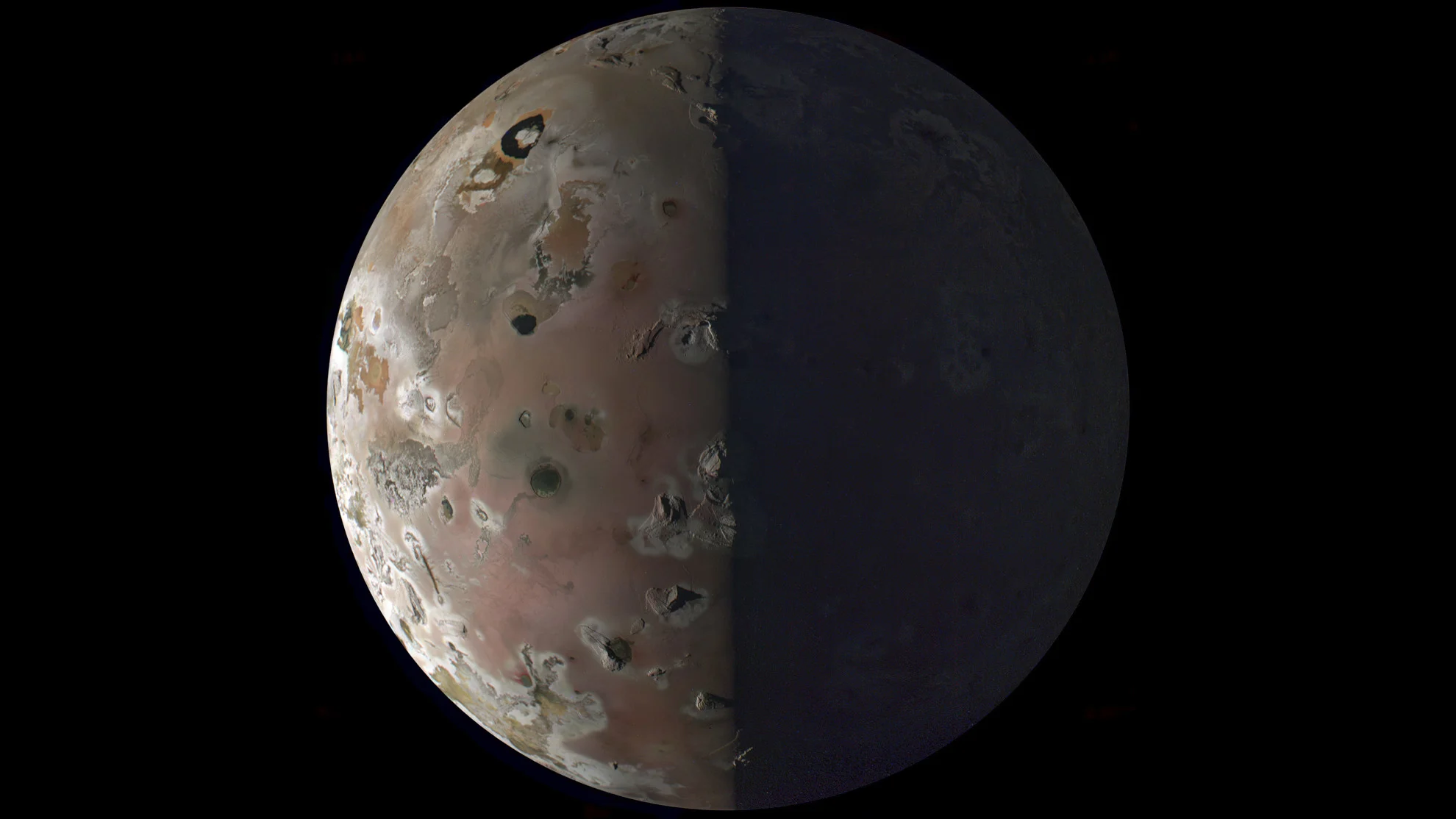
This image of Io was captured during Juno's 57th Perijove, on Dec. 30, 2023, showing the sunlit side (left) and the dark side dimly illuminated by light reflected from Jupiter ('Jupitershine'). Credit: NASA/JPL-Caltech/SwRI/MSSS/Kevin M. Gill
Not only are the resulting images spectacular to look at, but they will also help shed light on Io's volcanism.
This flyby, along with a previous one on October 15, 2023, and the next planned for February 3, 2024, will give researchers an unprecedented look at the activity on this small moon.
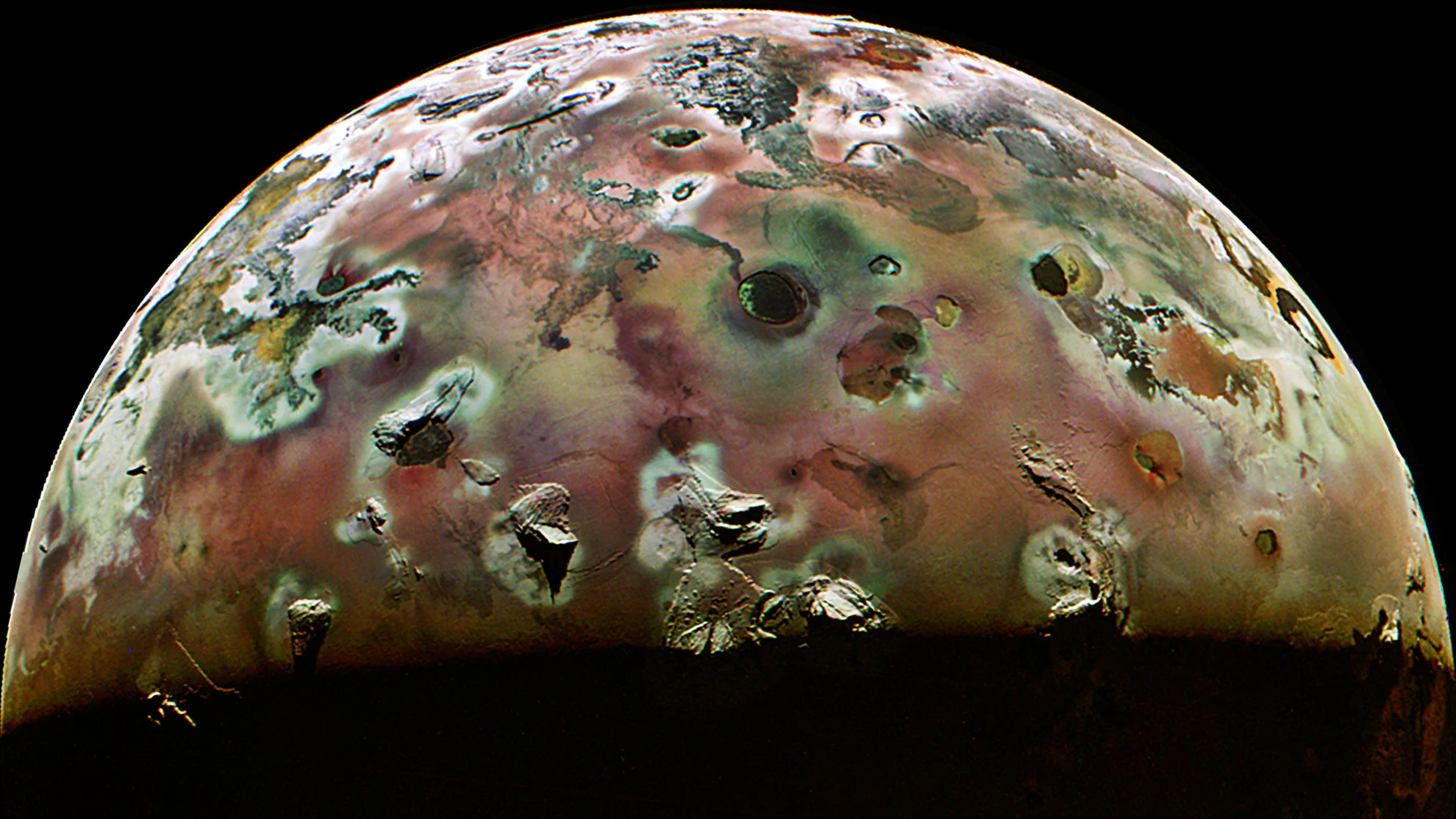
This version of the Perijove 57 imagery of Io has been processed to highlight more of the details and colour variations of the surface. Credit: NASA/JPL-Caltech/SwRI/MSSS/Thomas Thomopoulos
"By combining data from this flyby with our previous observations, the Juno science team is studying how Io's volcanoes vary," Scott Bolton, Juno's principal investigator at the Southwest Research Institute, told NASA.
"We are looking for how often they erupt, how bright and hot they are, how the shape of the lava flow changes, and how Io's activity is connected to the flow of charged particles in Jupiter's magnetosphere."
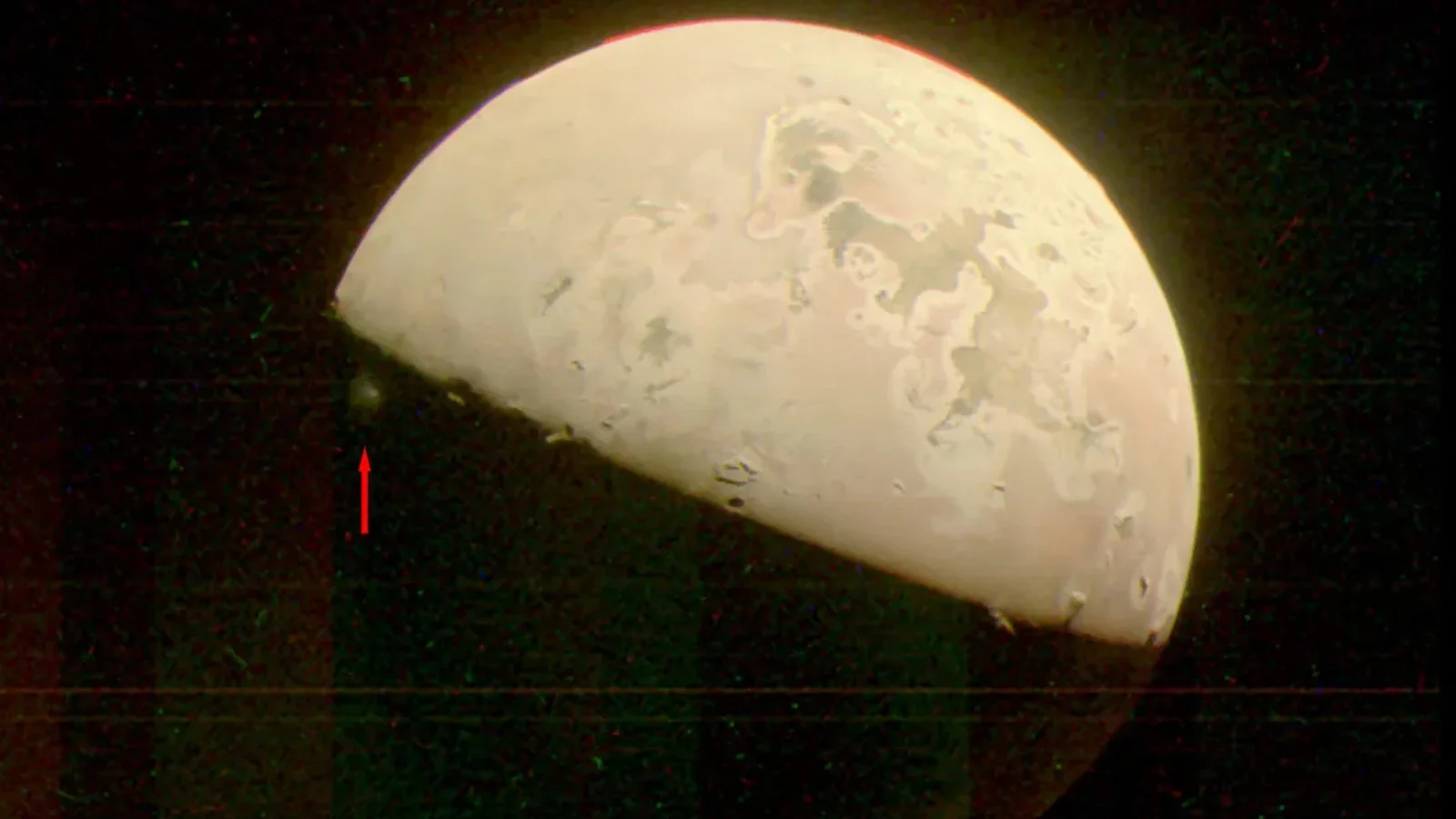
An arrow points to an immense volcanic plume that was erupting on Io during Juno's flyby on October 15, 2023. Credit: NASA/JPL-Caltech/SwRI/MSSS
"With our pair of close flybys in December and February, Juno will investigate the source of Io's massive volcanic activity, whether a magma ocean exists underneath its crust, and the importance of tidal forces from Jupiter, which are relentlessly squeezing this tortured moon," Bolton added.
During the December 30 flyby, NASA says, Juno passed so close to Io that the moon altered the spacecraft's trajectory around Jupiter. This planned maneuver was meant to reduce the probe's orbital time from 38 days to once every 35 days. The February 3 flyby will reduce that further to an orbit of just 33 days. This will set up the spacecraft to make several more Io flybys over the next two years, returning even more images and science for study.








